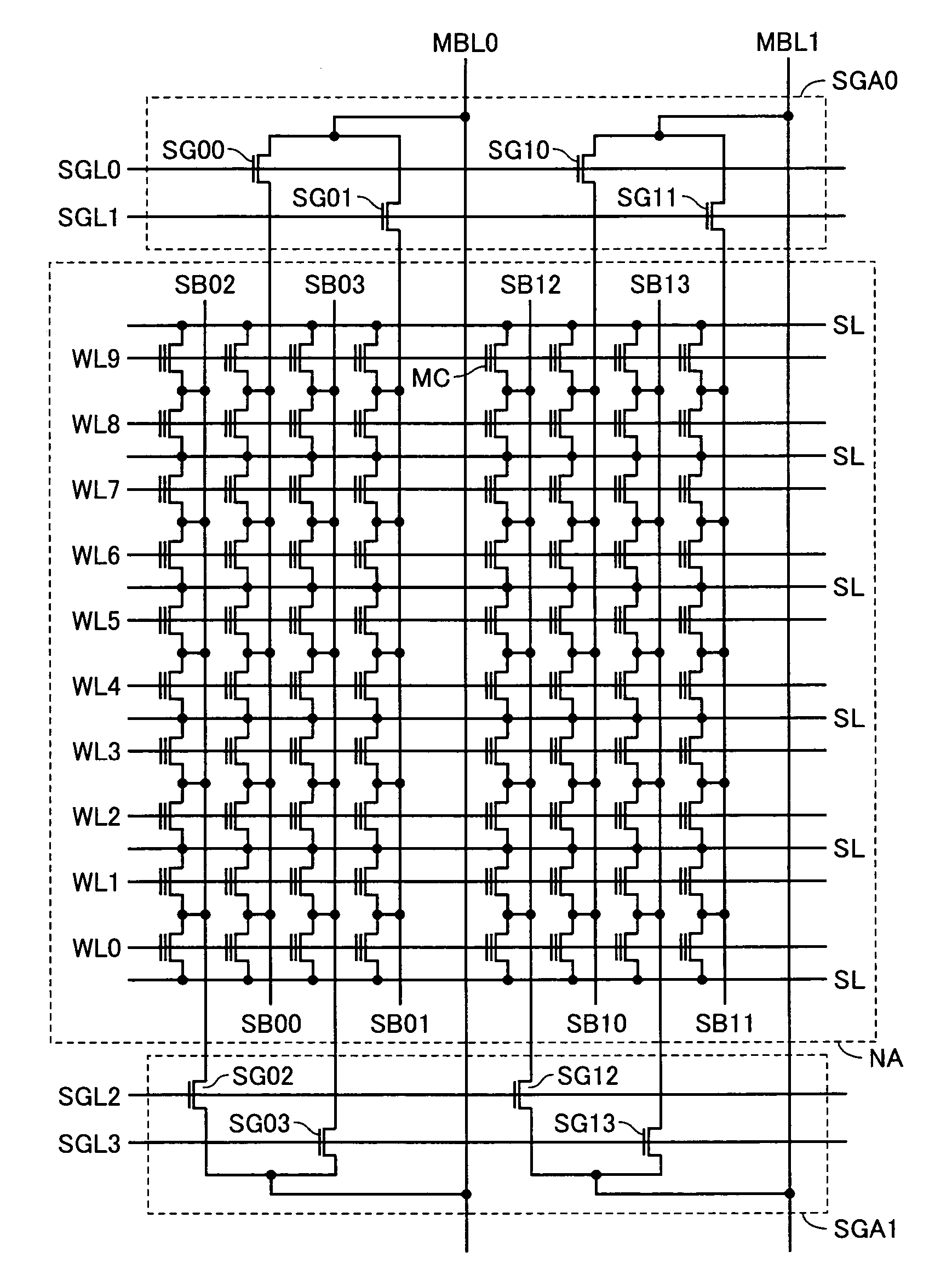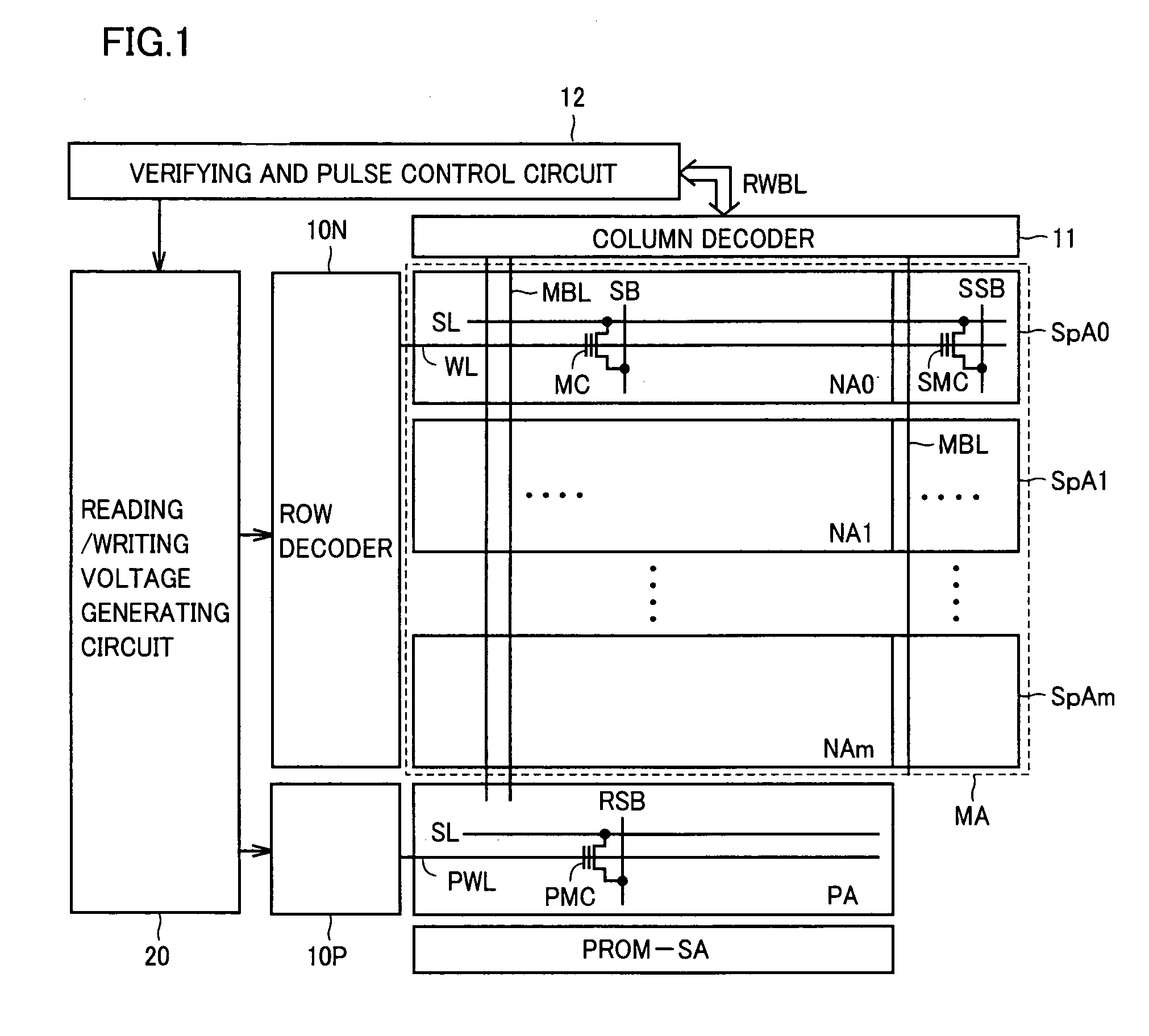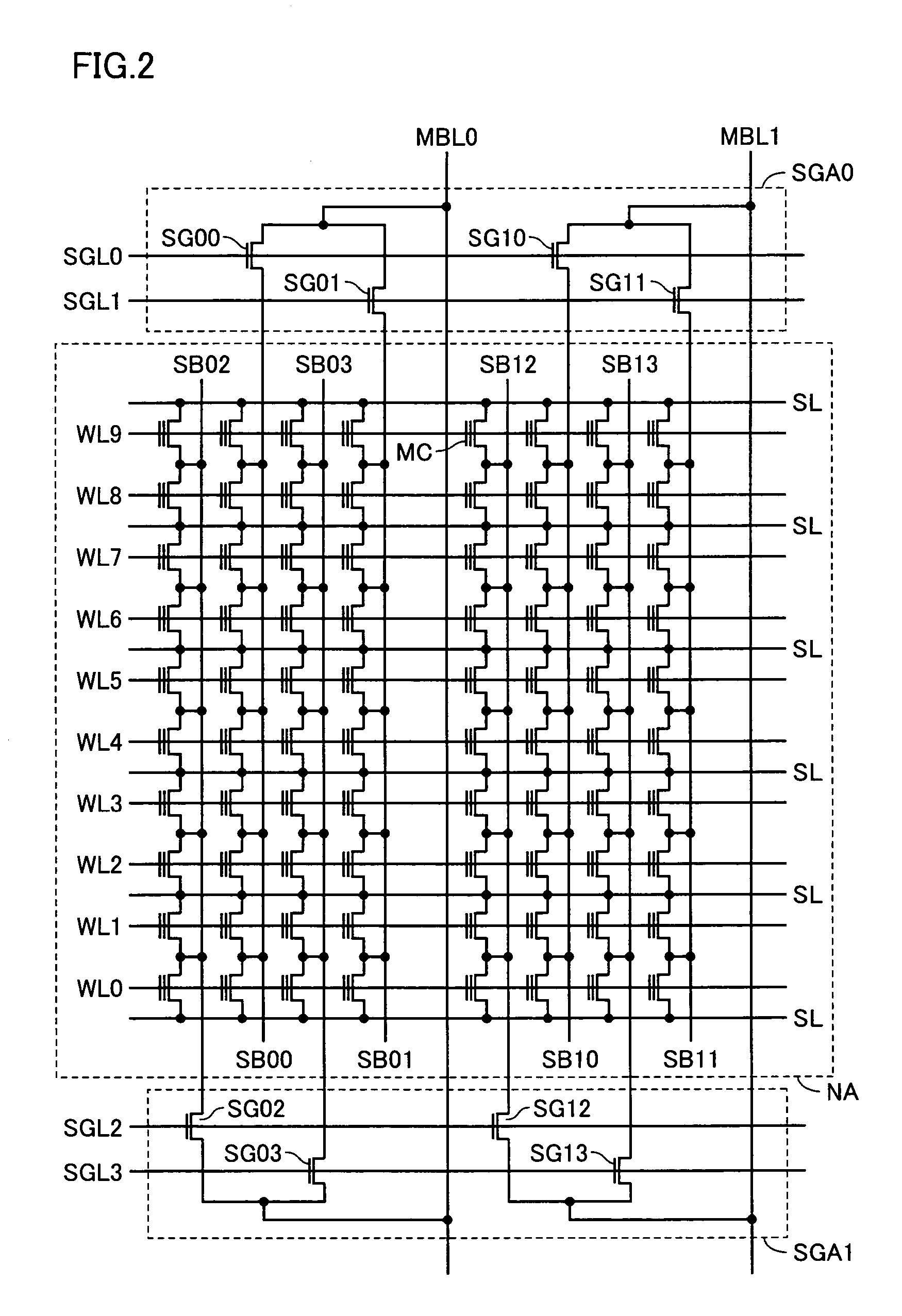Nonvolatile semiconductor memory device including high efficiency and low cost redundant structure
a semiconductor memory and redundant structure technology, applied in semiconductor devices, digital storage, instruments, etc., can solve the problems of increasing the area for diverting wirings, the layout size cannot be reduced, and the cost of fabricating increases, so as to achieve stable and accurate reading of redundant information stored, low cost redundant relief, and high efficiency
- Summary
- Abstract
- Description
- Claims
- Application Information
AI Technical Summary
Benefits of technology
Problems solved by technology
Method used
Image
Examples
first embodiment
[0046
[0047]FIG. 1 is a schematic block diagram illustrating the structure of a nonvolatile semiconductor memory device according to the first embodiment of the present invention.
[0048]Referring to FIG. 1, the nonvolatile semiconductor memory device includes a memory array MA and a PROM area PA. The memory array MA includes normal memory cell areas NA0 to NAm (m is a natural number greater than 1) each including a plurality of normal memory cells (hereinafter, referred to as memory cells) MC placed in a matrix shape and redundant memory cell areas SpA0 to SpAm each including redundant memory cells SMC for relieving memory cells having a defect. The PROM area PA includes PROM (Programmable Read Only Memory) cells PMC as program circuits for nonvolatily storing redundant information such as address information identifying defective memory cells. Hereinafter, normal memory cell areas NA0 to NAm and redundant memory cell areas SpA0 to SpAm will be comprehensively represented by the chara...
second embodiment
[0113
[0114]In the first embodiment, there has been suggested a structure in which the reading of redundant information for PROM area PA is performed in paths separated from those for the reading for normal memory cell areas NA. Here, as previously described, the data reading operation for PROM area PA is performed at power-on. Therefore, stable reading operation is required, even though it is performed under unstable power supply voltage conditions.
[0115]In the present embodiment, there will be suggested a structure for stabilizing the reading operation for PROM area PA.
[0116]Generally, in the data reading operation for normal memory cell areas NA, as illustrated in FIG. 3, when the voltages of selected word lines WL have been raised to a predetermined internally-generated voltage VBOOST, the drain currents flowing through the memory cells MC to be read are read through the corresponding main bit lines MBL to determine whether the retained data is “0” or “1”.
[0117]For example, in a ...
third embodiment
[0136
[0137]In the second embodiment, there has been described a structure for setting the erasing threshold voltage of PROM cells PMC to a value lower than the erasing threshold voltage of memory cells MC in order to ensure a reading margin.
[0138]However, since the lower limit value of the threshold voltage is set to a value lower than that for memory cells MC, PROM cells PMC in the data-erased stage (“1” data-retaining state) have a low threshold voltage and therefore may become depression-type transistors which generate a drain current even when the gate voltage is 0 V. Accordingly, even when the gate voltage of a PROM cell PMC is 0 V, namely when the PROM cell PMC is in the non-selected state, a leak current (hereinafter, referred to as an off current) may be generated in the PROM cell PMC.
[0139]In the data reading for PROM area PA, the voltage level of only a single selected program word line PWL of the plurality of program word lines PWL is changed to a lower voltage VLOW than ...
PUM
 Login to View More
Login to View More Abstract
Description
Claims
Application Information
 Login to View More
Login to View More - R&D
- Intellectual Property
- Life Sciences
- Materials
- Tech Scout
- Unparalleled Data Quality
- Higher Quality Content
- 60% Fewer Hallucinations
Browse by: Latest US Patents, China's latest patents, Technical Efficacy Thesaurus, Application Domain, Technology Topic, Popular Technical Reports.
© 2025 PatSnap. All rights reserved.Legal|Privacy policy|Modern Slavery Act Transparency Statement|Sitemap|About US| Contact US: help@patsnap.com



